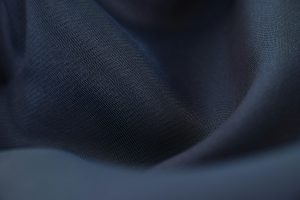UV-Responsive Dyes: Clothing That Changes Color in Sunlight
Have you ever wished that your clothing could change colors depending on the sunlight? Well, with UV-responsive dyes, this futuristic concept has become a reality. These dyes, also known as photochromic or sunlight-activated dyes, have the ability to change colors when exposed to ultraviolet (UV) rays from the sun. In this article, we will take a closer look at UV-responsive dyes and how they are transforming the fashion industry with their unique and innovative properties.
The Science Behind UV-Responsive Dyes
UV-responsive dyes are special chemicals that undergo a reversible photochemical reaction when exposed to UV light. These dyes contain molecules that have the ability to absorb UV radiation and then release it as visible light, resulting in a change of color. This process is known as ‘photo-isomerization’ and it occurs when the dye molecules change their structure in response to the UV light, causing a difference in their color properties. When the UV light is no longer present, the dye molecules return to their original structure and the color change reverses. This property makes UV-responsive dyes perfect for creating clothing that changes color in sunlight.
Applications of UV-Responsive Dyes
Fashion and Clothing
The most popular application of UV-responsive dyes is in the fashion and clothing industry. These dyes are used to create eye-catching and unique garments that change color when exposed to sunlight. They are incorporated into clothes, swimwear, accessories, and even shoes to add a fun and playful element to the design. UV-responsive dyes are particularly popular in beachwear and festival clothing, where people can show off their color-changing outfits in the bright sunlight.
Textile Design
Aside from clothing, UV-responsive dyes are also used in textile design to create dynamic patterns and prints. These dyes are used to add a touch of whimsy to fabrics and can be applied via different methods such as screen printing, digital printing, or hand-painting. UV-responsive dyes are also used to create customized designs for products like backpacks, hats, and umbrellas, making them popular among young and trendy consumers.
Security Features
UV-responsive dyes have also found applications in the security industry due to their ability to change color under UV light. These dyes are used to create unique and hard-to-replicate features on items such as banknotes, identification cards, and passports. This makes it easier to identify authentic documents and prevent forgery.
Advantages of UV-Responsive Dyes
The growing popularity of UV-responsive dyes can be attributed to their many advantages, including:
Eco-Friendly
UV-responsive dyes are non-toxic and environmentally friendly, as they do not contain harmful chemicals or heavy metals. This makes them a safer alternative to traditional dyes, which can cause pollution and harm to the environment.
Creative Design Options
UV-responsive dyes offer endless possibilities for creative and unique designs. These dyes can be used on various types of fabrics, and their color-changing properties add a fun twist to clothing and accessories. They also allow designers to experiment with different colors and patterns, making their collections stand out in a saturated market.
Long-Lasting
UV-responsive dyes are known for their durability and long-lasting color-changing properties. Unlike traditional dyes, which can fade over time, UV-responsive dyes maintain their bright and vibrant colors for an extended period. This makes them a great investment for both consumers and businesses.
Conclusion
UV-responsive dyes have revolutionized the fashion industry with their ability to create clothing that changes color in sunlight. Their eco-friendly nature, creative design options, and long-lasting properties make them a sought-after choice among designers and consumers alike. With continued research and development, we can expect to see even more innovative applications of UV-responsive dyes in the future.











